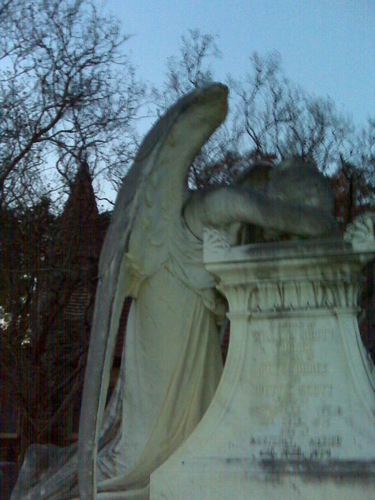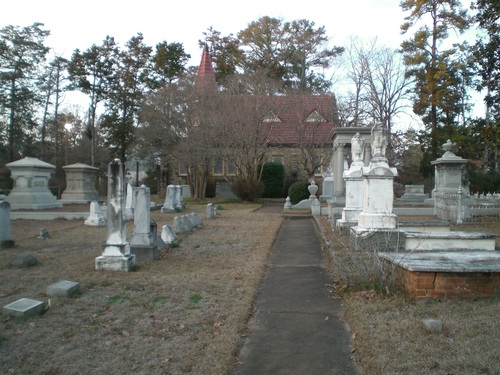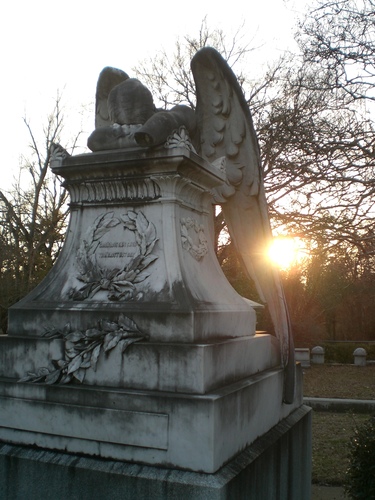.jpg) An Angel Weeps in East Texas
An Angel Weeps in East Texas
By Jeff Campbell
In 1904 Texan William Scott Youree was killed in Monterrey, Mexico at the young age of thirty one. William was the only son of Elizabeth Scott Youree, whose family founded Scottsville, Texas, and Peter Youree. His death, shrouded in mystery, was quite an emotional blow for his family; as it would be for anyone to lose a son at such a young age. The Scott and Youree families had the financial wherewithal to erect a magnificent monument to the young fallen Texan.
The monument to William Scott Youree is referred to as "Grief", sculpted by Frank Teich. In the excellent book Comprehensive Guide to Outdoor Sculpture in Texas, author Carol Morris Little talks about the monument; "this statue is considered to be Teich's most artistic creation. The ten-foot statue is carved from Carrera marble and reportedly cost $40,000 in 1904."
"Grief" is one of the most photographed subjects in East Texas; however it is not the only dynamic piece in Scottsville Cemetery. To the north of "Grief" sits a stone chapel that was erected by the families after the death of William Scott Youree. At the entrance of the cemetery a lone Confederate soldier stands watch over the site. The soldier sculpture is similar to those you see in town squares across the south but this one is quite larger. The Scotts were supporters of the Confederacy and the base of this monument reflects that support with seven names of Scotts who served the Confederacy. As you tour the cemetery grounds you will pass may grandiose monuments, the Scotts seemed to spare no expense remembering their dead.
The town of Scottsville and the cemetery are both named after William Thomas Scott. William Thomas Scott settled in Harrison County, Texas in 1840. He acquired many acres of land and established five cotton plantations. One of these five was Scottsville Plantation, his residence built by slave labor. Legend has it that the opulent Scottsville Plantation is modeled after the Biloxi, Mississippi home of Jefferson Davis. Cotton Baron William Thomas Scott would become the largest slave owner in Harrison County.
If you journey to Scottsville, Texas today you will not find a city center. In Scottsville there is no main street or town square in Scottsville. The town's population is less than 300 people. The hub of Scottsville is the Scottsville Cemetery, with the Weeping Angel as its centerpiece.
The Scottsville Cemetery is located approximately four miles east of Marshall, Texas. To visit take Highway 80 east, turn left on Highway 1998 and it will lead you to Scottsville and the cemetery.



_rdax_375x500.JPG)